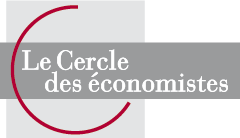Impact finance for a sustainable recovery
By Mary-Françoise Renard, member of Le Cercle des économistes
The health crisis and the diversity of its consequences have brutally raised the question of the survival of our societies. Millions of deaths, an increase in inequalities that marginalise part of the population, and the economic shock that this has caused, have left us powerless.
Will we have to face other crises similar to this one? Is life on earth endangered by human activity itself? Can a society survive without solidarity with the poorest?
The pandemic was a reminder that environmental problems are not just about global warming, however important that may be. Human activity is causing a major loss of biodiversity, which will lead to the emergence of new diseases in the future.
How can we look to the future and learn from what we have just experienced? How can we change the very foundations of our economic and social organisation so that the world remains liveable for all? It is urgent to find relevant answers to these questions. In a context where social demand for inclusion and environmental protection is strong, the credibility of political decisions and therefore social stability are at stake.
The development of impact finance is one of the answers to these questions. By introducing ethics into economic choices, it claims to serve the common good. To do this, it seeks to lead traditional finance towards greater responsibility for this transition in society. It thus has an obligation of result.
In a transition towards a sustainable economic system, transformations of the banking and financial system must accompany the indispensable ecological and social transformation of economic policy decisions.
This new orientation of finance raises questions about its foundations and operating methods.
How are the objectives defined?
Impact finance aims to reorient investment choices from a strict profit logic to a logic of sustainable transformation. Even before the health crisis, the development of our societies has had a high ecological cost, jeopardising the future of the planet, but also a high societal cost, depriving part of humanity of a decent life. It is therefore a profound change that must take place, while having to manage the legacy of past policies.
This new direction of finance is often presented as serving the common good.
What is the common good? Who defines it? Does it mean serving a general interest that could not result from the sum of individual interests but would represent the interest shared by the community?
This notion, originally philosophical and religious, seems difficult to integrate into the economic sphere. It presupposes a consensus on political choices which is quite far from existing. We can therefore take a more precise interest in the commons, since as soon as the financial system has to accompany a systemic change, it must respond to the question of the management of the commons and of the inappropriate.
The commons are characterised by non-exclusion (no one can be excluded from their use) and rivalry (the fact that one person consumes this good reduces the quantity available to others). Considered in a broad sense, they concern biodiversity, air, water, soil, access to health, education, justice or intangible heritage.
Impact finance must ensure that future generations are not excluded from the use of environmental goods. It is also the non-exclusion of the most vulnerable from the labour market.
Consequently, the choice of investments to be supported can be enlightened by this reference to common goods, which provides an interpretation grid. Is a project necessary for the survival of the planet or society? Does it allow the general interest to be defended?
How is the impact assessed?
How can elements of social and environmental capital that are not taken into account by either public or private accounting be assessed? The effects of an investment in training that allows a person to be reintegrated into the labour market go far beyond this fact alone, since it leads, for example, to an improvement in the quality of life of his or her family, a reduction in health problems, etc. Most of the benefits of environmental projects are not marketable. The environment is a common good and therefore the social profitability of investments in this field is higher than the private profitability, the one that investors can enjoy.
Moreover, their temporality is not the same as that of investors. The temporality of a project to support biodiversity is not that of an investor who expects a return on his investment. An investment to improve air quality may not have an effect for several decades; its cost is immediately calculable but its benefit is not.
Should these issues be left to the market, or should they be dealt with by the state, or by user groups?
These externalities must be internalised by companies to become objectives in their own right. This is what impact finance should allow by supporting projects of this type and by making it possible to integrate the long term.
For an investment to be considered an impact investment, it must have a clear intention to have a positive and measurable impact, while offering a financial return. The advantage of this new programme is that it concerns private and public companies as well as associations and local authorities.
However, the criteria are not yet well defined and measuring impact is complex, even if a pre-existing reference such as the United Nations Sustainable Development Programme is used. The attractiveness for savers undoubtedly depends in part on the existence of tools that can capture the reality of impact. However, the multiplication of indicators and rules could paralyse the process and the approach is therefore a balancing act.
The question also arises as to how to link these new financing methods to existing environmental taxation. A good linkage would undoubtedly make it possible to improve the effectiveness of a tax system that is sometimes difficult to put in place.
Finally, the question of taxonomy, including social issues, is at the heart of the application of this programme. It can only be envisaged by linking the local level, which is often the most relevant for defining impact criteria, and the supranational, European level, as the European Commission has already made progress on a classification of “green” financial products.
Given the importance of the issues at stake, all these questions underline the extent to which this programme is stimulating, represents a major undertaking and can help transform society if it avoids the pitfall of confusing demands with a good conscience.







